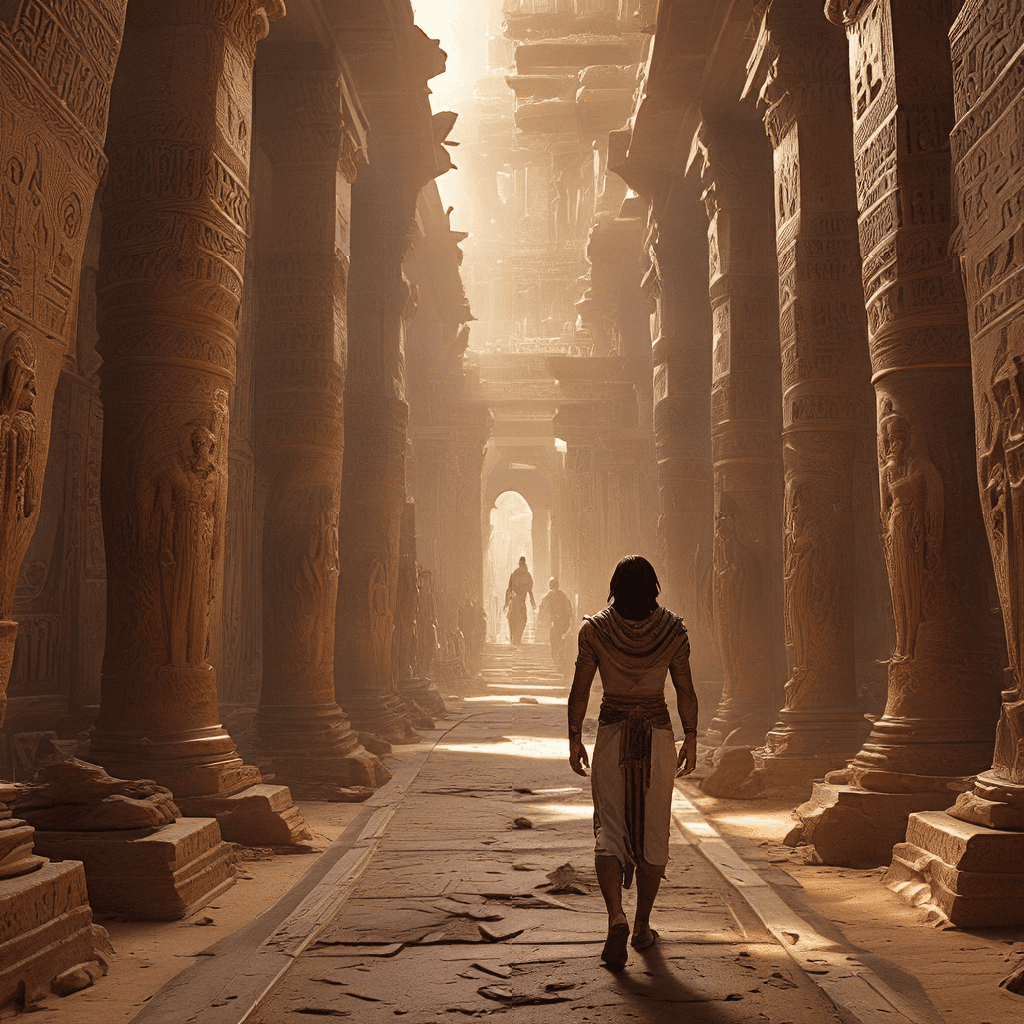The Egyptian Underworld: The Journey to Eternity
1. Introduction: The Concept of the Afterlife in Ancient Egypt
Ancient Egyptians believed deeply in the afterlife, viewing it as a crucial continuation of life on Earth. They believed that the soul, or “ka,” remained after the physical body died and needed to be preserved for the journey to the afterlife. They believed the physical body was essential for the soul’s journey. To ensure this, they mummified their dead, preserving their bodies for the afterlife. The Pharaoh held a special place in this belief system, seen as a divine king who would rule over the underworld and ensure order in the afterlife.
2. The Journey Begins: Death and Embalmment
When an Egyptian died, a period of mourning began. Family and friends prepared the body for the journey to the underworld, a complex and intricate process. The mummification process, a lengthy and sophisticated technique, involved removing organs, drying the body, and wrapping it in linen. This process aimed to preserve the body to ensure the soul’s journey to the afterlife. The body was then placed in a sarcophagus, often adorned with intricate carvings and symbols, and buried in a tomb. Funerary rituals, which included offerings of food, drink, and precious objects, were crucial to guide the deceased through the underworld and ensure their well-being in the afterlife.
3. Trials and Tribulations: Navigating the Underworld
The underworld, known as the Duat, was a dangerous and challenging landscape in Egyptian mythology. Upon death, the soul embarked on a perilous journey through this subterranean realm, facing many obstacles. The journey was filled with perils and challenges, including encounters with mythical creatures and divine beings. The deceased needed to navigate through perilous landscapes, such as the “Lake of Fire” and the “Desert of Burning Sands,” while also overcoming the temptations of the underworld. These challenges tested the soul’s strength and resilience, ultimately determining their fate in the afterlife.
4. The Weighing of the Heart: Judgment and Justice
One of the most important moments in the underworld journey was the Weighing of the Heart Ceremony. Here, the deceased’s heart was weighed against the feather of Ma’at, the goddess of truth, justice, and cosmic order. The heart represented the soul’s moral character, and if it was lighter than the feather, the soul was deemed worthy of entering the afterlife. However, if the heart was heavier, it would be devoured by Ammit, a monstrous creature symbolizing chaos and destruction. Anubis, the jackal-headed god of mummification, presided over this critical ceremony. His watchful presence ensured fairness and impartiality, symbolizing the importance of justice in the afterlife.
5. Entering the Hall of Two Truths: Facing Osiris
If the heart passed the Weighing of the Heart Ceremony, the soul moved on to the Hall of Two Truths, where they faced Osiris, the god of the underworld and judge of the dead. Here, the soul was interrogated, answering questions about their life and actions. The soul had to declare their innocence and truthfully answer the 42 negative confessions, emphasizing their adherence to Ma’at’s principles. This hall represented the final judgment, determining the soul’s ultimate fate. Those deemed worthy would be granted eternal life in the afterlife, while those who failed would face a grim fate.
6. The Fields of Reeds: The Paradise of the Afterlife
Those who successfully navigated the underworld and passed judgment were welcomed into the Fields of Reeds, a paradise in the afterlife. This idyllic realm was a place of eternal peace and abundance, where the righteous souls could enjoy everlasting happiness. The Fields of Reeds were a place of beauty and tranquility, with fertile soil, lush vegetation, and abundant food and drink. The Egyptians believed that the sun god Ra, who traveled through the sky by day and the underworld by night, played a crucial role in sustaining the Fields of Reeds. He ensured the continued existence of this paradise and the well-being of its inhabitants.
7. The Role of Gods and Goddesses
Throughout the journey to the afterlife, the deceased were guided and protected by various gods and goddesses. Horus, the falcon-headed god of kingship and protection, symbolized the triumphant spirit of the deceased. Thoth, the ibis-headed god of wisdom and knowledge, ensured the accuracy of the deceased’s statements in the Hall of Two Truths. These divine beings played vital roles in ensuring the deceased’s safe passage through the underworld and their ultimate acceptance into the afterlife. Their presence underscored the importance of divine intervention and the interconnectedness between the world of the living and the world of the dead.




